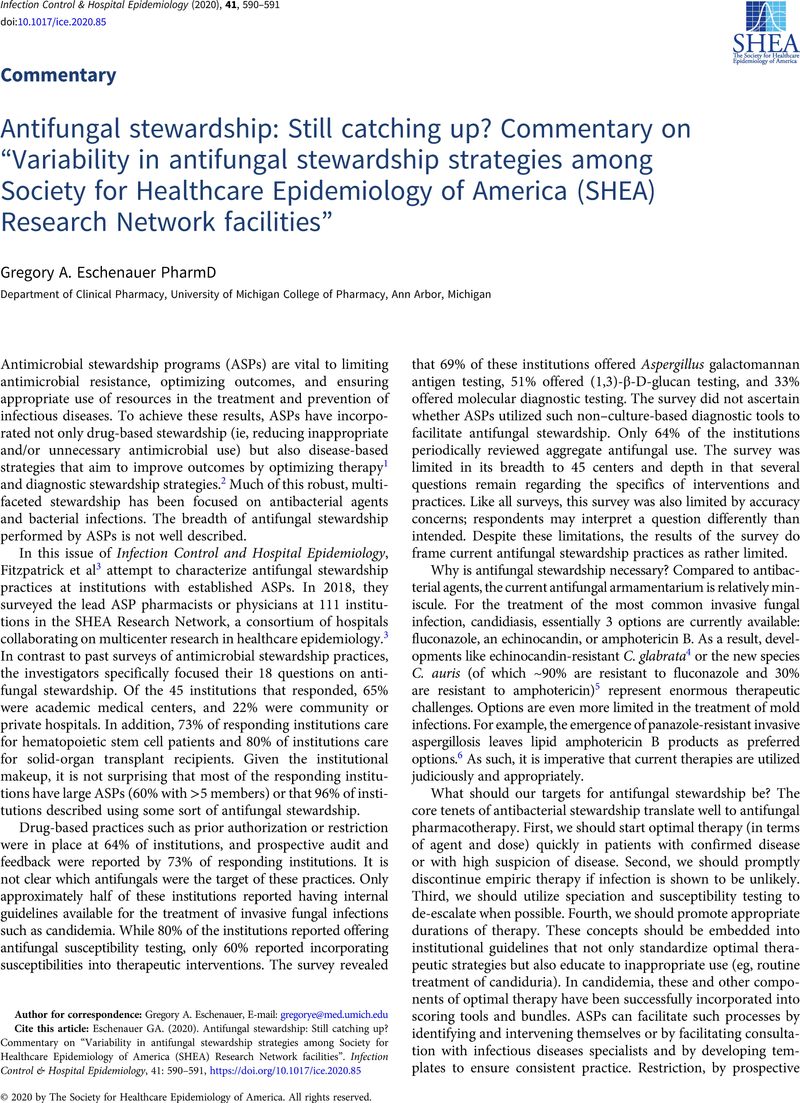Fitzpatrick, MA,
Albarillo, F,
Santarossa, M,
Evans, CT,
Suda, KJ.
Variability in antifungal stewardship strategies among Society for Healthcare Epidemiology of America (SHEA) Research Network facilities.
Infect Control Hospital Epidemiol 2020; [Online ahead of print]
CrossRefGoogle ScholarPubMed 